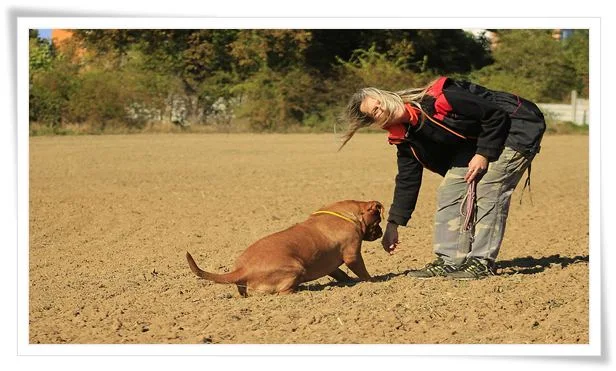Dog Training – How to Train Your Dog to Sit
Every dog should learn certain basics relating to how to live with people. Naturally, housetraining is important, and your dog should also be taught that biting and nipping are unacceptable. Not everyone realizes, however, that training your dog to sit on command is also very important.
Training your dog to sit can come in handy almost every day. For example, imagine a child running up to your dog to pet him while you’re out for a stroll. It will be much easier to handle this situation safely if your dog sits calmly instead of bouncing around or jumping up on the child. training your dog to sit on command can also be useful while your dog is riding in your car, at the groomer’s or vet’s office, while you’re putting his leash on, or if you simply want him to calm down. Sitting on command also paves the way for your dog to learn other commands, including “stay.” No matter what size or type he is, training your dog to sit on command can be invaluable.
In addition to being an important skill, “sit” is usually the easiest command for a dog or pup to learn. All it takes is the right basic techniques, patience, persistence and positive reinforcement. When you start training your dog to sit, keep these general training tips in mind:
Positive reinforcement is crucial. Dogs learn quickest by being rewarded for performing the behavior you’re teaching, so give your dog treats and plenty of praise every time he sits on your command.
All mistakes should be corrected calmly and verbally. Never strike, shout or yell at your dog. Those types of corrections will confuse your dog. Even worse, they might make him afraid of you.
All training sessions should be short and fun. Puppies have short attention spans, but limit your training sessions to no more than five to ten minutes each even if your dog is older. Several short sessions every day are more effective than a single, much longer session.
Encourage other people in your home to participate, but make sure everyone uses the same command.
Put some treats in your pocket, and then take your dog to a place where he won’t be distracted.
With your dog standing in front of you, show him one of the treats.
While holding a treat, slowly raise your hand so it ends up above your dog’s head.
As your dog follows the treat with his eyes, his rear end will probably start lowering toward the ground.
At the same time your dog sits, say his name followed by a firm, clear “sit” command. Immediately praise him and give him the treat.
Repeat this several times and then take a lengthy break.
Do this several times each day until you’re sure your dog understands and follows your command reliably. Reduce the number of treats he gets gradually, but don’t eliminate the praise.
Don’t hold the treat too high over your dog’s head. Instead of sitting, he might lunge or stretch his neck to reach it.
Always use the same command. Don’t vary it by saying “sit” one time and “sit down” another time.
Never give your dog the treat unless he actually sits.
If you start losing your patience, stop and try again later.
Don’t “help” your dog by pushing his rear end down to the ground.
Training your dog to sit is easy. You’ll soon see results if you follow these guidelines consistently.


Comments
Post a Comment